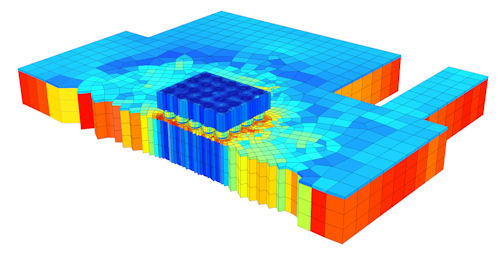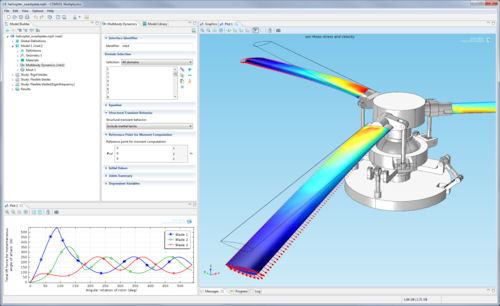June 4, 2013
 |
Recently COMSOL announced version 4.3b of its COMSOL Multiphysics simulation system and—geez, Louise—how COMSOL Multiphysics has grown. Long ago it was called FEMLab and was an add-on toolbox for a well-known mathematics system. They described themselves as a Swiss Army Knife of physics tools. If COMSOL were a pocketknife then, today with its wide array of disciplines, it’s the Williams-Sonoma cutlery inventory.
At its heart COMSOL has what can be called a physics kernel—the basic algorithms, mathematics, computer stuff such as graphics and OS obligations that all analyses operations must leverage at some point or the other. By handling the “generic” functionality in a centralized kernel, COMSOL’s programmers can focus in on the unique physics required by a given kind of analysis. It also enables them to quickly upgrade and expand algorithms and solvers as physics research evolves.
This flexibility manifests itself in a modular suite of applications. Broadly classified for electrical, fluid, mechanical, and chemical applications, COMSOL has more than 20 discipline-specific modules tailored for things like structural and CFD analyses as well as plasma modeling, fatigue, battery and fuel cells, and MEMs, to name a few. Additionally, there are optimization and particle tracing modules as well as modules for creating associativity between COMSOL and major CAD and engineering applications, and a materials library.
Version, 4.3b introduces five new application-specific modules: Multibody Dynamics, Wave Optics, Molecular Flow, Semiconductor, and Electrochemistry. Here’s a quick sketch of each.
 |
The Multibody Dynamics module lets you analyze the assembly of rigid and flexible bodies, while the Wave Optics module is for analyzing electromagnetic wave propagation in optically large structures, such as optical fibers and sensors. The Molecular Flow module can simulate rarefied gas flow in complex CAD geometries of vacuum systems.
The Semiconductor Module enables the detailed analysis of semiconductor device operations at the fundamental physics level, allowing for the modeling of PN junctions, bipolar transistors, MOSFETs, MESFETs, thyristors, and Schottky diodes. The Electrochemistry Module provides tailored user interfaces for electroanalysis, electrolysis, and electrodialysis.
Version 4.3b also offers enhancements to CAD importing and geometry handling, meshing, physics, solvers, results, and productivity tools across most areas of the suite. Of particular note are a new interface that lets you work with COMSOL Multiphysics from within Autodesk Inventor and a new magnetics solver for faster stationary and time-dependent magnetics simulations. Oh, and the link with Excel now lets you import multiple models and export material data from Excel to COMSOL.
Today’s Check It Out link takes you to a brief video overview of the new modules as well the other new features in COMSOL Mulitphysics 4.3b. No registration. If you’ve never taken a look at COMSOL before, this is an excellent opportunity to see what this system is all about.
Thanks, Pal. – Lockwood
Anthony J. Lockwood
Editor at Large, Desktop Engineering
Subscribe to our FREE magazine, FREE email newsletters or both!
About the Author
Anthony J. Lockwood is Digital Engineering’s founding editor. He is now retired. Contact him via [email protected].
Follow DE





